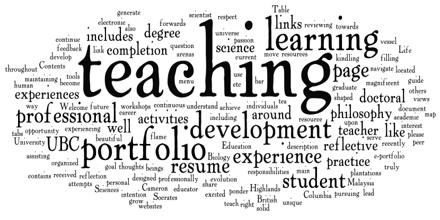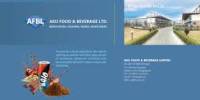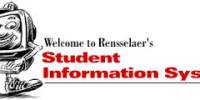Teaching Experience in Bangladesh:
A Study On
Mohammadpur Preparatory School & College
Mohammadpur Preparatory School and College stared their journey in 1976 with a pleasant environment, strict discipline and modern education system. It has two systems of education, Bengali medium and English version.
The main objective of this study is to explore the teaching activities at Mohammadpur Preparatory School and College. Data have been used both from primary and secondary sources.
The identity of experienced teachers is actually dependent upon a teacher’s background, biography, and past teaching experiences. Every teaching experience is a product of enculturation and membership of a particular culture. That is, the type of experience a teacher has within the classroom is dependent upon how well the teacher understands the culture of the community. The roles of the teacher are multidimensional and extend outside the classroom. To be a teacher is to serve students, the school, and the community. Teaching activities generally includes preparing syllabus and academic calendar, education planning, taking every class in every day, preparing lecture sheet and taking examination.
Speaking is an important part of teaching. It is very important for teacher to encourage students to speak in the classroom. Teachers at MPSC use different techniques for encouraging the students to speak in the class. Many students are reluctant to speak in English due to anxiety of making mistakes, lack of interesting topic etc.
To be a successful classroom management, a teacher should have abilities to recognize students’ weak points and convert that weak point into strengths which will enhance students’ self-confidence and aspiration to learn. The class size is a very important factor of class room management. In MPSC each section contains 50 students but each classroom is not properly allocated for students. Sometimes benches are not suitable for the junior section students; seat benches are lower than the high benches so that students those are small in size have problem in sitting and writing.
Through strengthening parent- teacher relationship, the teacher can increase awareness among parents about their student’s success and failures of their academic life. Parents meetings at MPSC are organized by school management committee before every term exam and the day in which the term result is published.
So for better education, teacher should provide maximum opportunity to the students to speak in the English as it is the English version school. The number of students in each class should be minimized. At last governing committee as well as teachers should concentrate more on improving the parental involvement for the betterment of student’s academic achievement.
Background of MPSC
After the liberation some dedicated people realize that a quality education is very much essential for children. Mohammadpur Preparatory School and College stared their journey in 1976 with a pleasant environment, strict discipline and modern education system. The school has separate section for boys and girls. It has two systems of education, Bengali medium and English version. Students from this institution appear in PEC, JSC, SSC and HSC public examinations. The school curriculum includes traditional secondary and higher secondary school academic subjects assigned by Dhaka Education Board. Now more than 10,000 students are studying here and around 360 teachers are servicing their best for build a superior nation.
Project Part
Origin of the Study
Internship program helps to apply the theoretical knowledge in the practical world and make a student competitive in the corporate environment. Even this program is also helpful for the post graduate students who are employed in different organization at different post. This program helps to learn and explore different functions and activities of the various sector or tasks.
Objectives of the Study
The broad objective of this study is to explore the teaching activities at Mohammadpur Preparatory School and College. The specific objectives of this study are:
- To explore the roles of Assistant teacher at MPSC
- To explore the classroom management procedure;
- To explore the nature of parents’ involvement in their children’s academic achievement,
Methodology of the Study
As an Assistant teacher of MPSC, researcher is involved with various teaching activities. Both primary and secondary data are used to complete the study. In this study, qualitative techniques are used to find and analyze the information.
The primary sources of information are:
- Direct observation tool will be used to explore the procedure of role of the speaking in the class and parental involvement.
- Unstructured interview will be conducted with Vice Principal and Rector of MPSC to explore classroom management;
- Focused Group Discussion will be organized with seniors and colleagues of to explore the role and responsibilities of Assistant teacher at MPSC.
The Secondary sources of Information are:
- Official records will be used to explore the responsibilities of Assistant Teacher;
- Annual publications will be used to extra-curricular activities of the students.
Teaching Experience at MPSC
The Teaching Experience
The experience of becoming a teacher starts early in life and is affected by the environment in which a person is raised. The identity of experienced teachers is actually dependent upon a teacher’s background, biography, and past teaching experiences. In addition to identity, when talking about a teaching experience, it is also vital to reflect upon school-community relationships. To have effective school-community relationships, the roles and responsibilities of teaching are vast.
Becoming a Teacher
Most teachers in Bangladesh are recruited in two different ways. For government primary schools the Directorate of Primary Education advertises posts and invites application in daily newspapers. Selection tests and interviews are used to determine candidates. Candidates must pass a uniform written test (arranged by a six-member Central Committee headed by DGPE) and an oral test (determined by the district level District Education Committee Chair and Deputy Commissioner). The Central Committee publishes the results of the written and oral scores, and from these candidates is selected. The DPEO is the appointing authority of GPS teachers. A large number of teachers are recruited at once and then posted to different schools (regardless of their home districts or towns). Such recruitment makes finding living arrangements extremely difficult for many newly appointed teachers, especially for female teachers. There are also lapses in the process through corruption and malpractice. Despite these problems the selection procedure has been maintained. Government Secondary School teachers are appointed through the Bangladesh Public Service Commission (PSC). The number of available positions is based on a teacher/student ratio of 1:60.
In community, non-government and private schools, teacher recruitment is performed by the School Managing Committee (SMC), mostly on the basis of interviews. Teachers in these schools are usually recruited from the local community and for this reason suitable candidates are not always available. In RNGPS schools, for instance, four positions are available (two must go to women) with no Head Teacher. Instead the senior teacher is in charge and receives an allowance of taka 50. The SMC chooses candidates who are then sent to the Upazila Education Committee, which recommends them and sends them to the District Education Committee. The DEC forwards them to the RNGPS Project Implementation Unit, which approves the appointment. Community Schools have a similar process and post requirement, however priority is given to candidates skilled in English and Math. Non-Government Secondary School teachers are also appointed through SMCs. Although the number of positions depends on student enrolment there is a minimum of 9 posts for NGSS teachers.
Selection criteria are fixed by government. Primary school teachers are expected to hold at least a Higher Secondary Certificate (HSC) and secondary school teachers are expected to be college graduates or have a Degree pass. About 15-20 percent of teachers exceed the minimum qualifications. Primary schools do not require teachers to hold a Certificate in Education (C-inEd), however within a year or two of recruitment primary school teachers are deputed to any primary training institute (PTI) for a 12-month certificate course.
For becoming a teacher at MPSC one’s must be completed his/ her Honors and Masters degree with minimum 2nd class in all public examination. If someone has these qualifications then he/ she can apply with two copies passport size photograph, all educational qualification certificates, a CV and experience certificates. The governing committee arranges a written examination for the applicant. For general subject applicant must have to answer Bengali, English, Mathematics and General knowledge in the written examination and for specific subject teachers, he/ she have to give examination in his/ her specified areas. After completing written examination qualified applicants call for the viva. In the viva board experienced persons of the governing committee are presents. They choose the most eligible candidate for the vacant post.
Not only is the educational background of a teacher important, so is the personal background. Understanding the origins of a teacher perspective on education is largely a product of understanding his or her biography. In other words, “Teachers’ previous life experience and background help shape their view of teaching and are essential elements in their practice. In addition, teachers need time to reflect upon their beliefs about teaching and determine how their biographies affect their ideologies of education. If teachers are not given time to self-analyze, they will not be able to see the pros and, more specifically the conflicts of their perspectives. As a result, these teachers will be more likely to resist such things as new theories and pedagogical practices.
The Teacher and the Community
Every teaching experience is a product of enculturation and membership of a particular culture. That is, the type of experience a teacher has within the classroom is dependent upon how well the teacher understands the culture of the community. Classroom instruction and activities are negatively affected when teachers know little about the community in which they teach.
Research indicated that teachers teach more effectively when they understand their students’ home lives and home communities and utilize this information within their curriculum and teaching instruction. The curriculum is not simply synonymous with information. There needs to be linkage between the school and the broader community purposes; a way of grounding curriculum and instruction in the civic and economic life of a community.
Successful teaching is determined by the relationships the teacher has with students, parents, colleagues, administration, and other members of the school community. To create and sustain effective relationships with these groups, teachers must be attentive to beliefs, norms, and practices of the communities in which they teach. Positive relationships and interactions between the school and the community are a vital component of a quality education. The school and community represent a shared sense of belonging and community focus; community members are partners in the educational process of their children. This means that teachers and parents do not exist in separate worlds but are united with others in the community into a milieu of common purpose and direction.
The Many Facets of Teaching
To be a teacher means to enter a profession that involves the acceptance of many roles. Some of the formal roles of a teacher as being a learning facilitator, role model, curriculum planner, resource developer, and assessor. Through these roles, the teacher is engaged in instructing, disciplining, monitoring, assessing, and interacting with many students all of whom have diverse personalities, interests, and academic abilities.
The roles of the teacher are multidimensional and extend outside the classroom. To be a teacher is to serve students, the school, and the community. Teaching is about building relationships with various members of the school and community. Teachers are counselors, coaches, career advisers, after-school tutors, and often serve on community committees, for example. All of these roles and responsibilities are an integral component of the teaching experience and assist in nurturing and ensuring positive interpersonal relationships with students and community members.
It is difficult to stipulate what the specific responsibilities of any given teacher will be. Teaching tasks vary according to needs of the school and community. However, whether a teacher is employed within a rural community or urban community does have influence on the teaching experience. In the next sections, I will take a closer look at characteristics of rural and urban education.
Preparing Syllabus
As an assistant teacher every year I have to prepare syllabus for the students. This is done on the basis of previous and next class similarities which are verified by the vice principal.
Academic Calendar
We have a very well organized well planned academic calendar. All classes, examinations and other activities are followed by this schedule. Senior teachers prepare this calendar each year after discussing with the governing committee and academic council.
Education planning
I take every class based on a perfect pre-planning. In the plan it is stated that how a teacher will take class in the scheduled time which helps teacher to provide a standard teaching.
Take every class in every day
We take every subject’s class in every day and the duration of the class is 40 minutes also put same importance to every subject. For that reason we can complete our syllabus in time and no part of the syllabus remains incomplete. I have to take 24-29 classes per week.
Lecture sheet
Some junior classes I have to provide lecture sheet before starting the class. It helps students to get the key points of the lecture and important questions before delivering the lecture, therefore students can follow the teacher’s speech very easily.
Weekly Examination
Weekly examination on every Thursday or after completing any chapter is taken by the respective teacher. It helps to understand students’ current performance.
Supervisory Study Program
Beside the regular classes I take supervisory study program in a great care for all but especially weak and less meritorious students. It is an alternative of private tuition also a very efficient for less earning family.
Alternative Class
If it is not possible to take classes for hartal day or natural disaster then the alternative classes are taken in the next holiday.
Make-up test
I have to take make up quizzes or examinations if any student misses class for sickness or any logical reason.
Script checking and duties
In each class we have to check the class work of every student and give them feedback. In the examination hall we are very careful about the students and seating arrangement is good.
Administrative and management work
I have to do various administrative works during admission test, public examination and arranging programs. In a month I have roster duty twice. On the roster day, I count all the students and make sure the overall environment of the school is being well.
Extracurricular activities
At MPSC various programs are organized around the whole year. In the beginning of the year school committee arrange sports, annual picnic, study tour, cultural week, science fair etc. In all national days such as: International Mother Language Day, Independence Day, Victory Day etc are celebrated by essay writing, reciting, drawing and honorable people are coming to share their experience with the students that children can know real life story and motivate to nurture their life for the nation.
Speaking in the Class:
Speaking is an important part of teaching. The main theme of speaking is to interact with students effectively. Despite its importance, for many years, teaching speaking has been undervalued. Teachers have continued to teach speaking just as memorization of dialogues.
Nowadays the goal of teaching speaking is to improve learner’s communication skill. It is often spontaneous, open-ended, and evolving.
Encouraging Students to Speak:
It is very important for teacher to encourage students to speak in the classroom. If they do not encourage them to use the language then students’ speaking ability will never improve. In the classroom if the students make any mistake, the teacher can help them to correct their mistakes. At MPSC teachers use following techniques for encouraging the students to speak in the class:
i) Encourage students interactions:
Most of the students feel very shy to speak in the classroom because they are not used to take part in classroom discussion. Students do not even interact with other students if they have to use the target language. Teachers try to create a comfortable atmosphere where students are not afraid to speak and enjoy communicating with the teacher. They give special attention to junior level students. Teachers motivate the senior level students to speak in the class in order to share their views and problems.
ii) Make speaking activities communicative
Speaking activities need to be very interesting to encourage meaningful interaction between students. If the speaking activities are not interesting enough and do not provide opportunity for students to speak then there is no use of giving speaking activity. Teacher should give such activities so that students can share their thought, express their feeling, find out the real information.
In the junior class most of the students like to speak when oral quizzes are taken. They try to answer quickly. Students also love to speak when I ask them about their real life experience, popular celebrities, cartoon characters, cricket, animated movie, mobile and computer games etc.
iii) Plan speaking activities carefully:
At the beginning stage, activities are kept easy for students but good enough so that students can use the target language. When they get used to communicate then the teacher introduce more difficult activities such as role-plays, discussions, debates and problem-solving tasks.
iv) Give Students practice with both fluency and accuracy
At the beginning and intermediate level of studies students are given opportunities to improve their fluency as well as accuracy. Accuracy means using the target language correctly and fluency is using language quickly and confidently. The teacher does not emphasize on anyone aspect of speaking. Rather, they emphasize practice on both accuracy and fluency.
v) Use group work or pair work.
To improve students’ speaking, they should be given enough opportunities to speak inclass. So, in class, teacher talk time should be less and student talk time should be more. To increase student talk time, the teacher should engage them in group work and pairwork. In this way, the students will get chance to interact with other students.
Experience and Observation of Student’s Speaking in the Class:
Over the last three years, I am working as an Assistant teacher at MPSC. During this tenure, I have observed classes both junior level and senior level. Although I am working in the English Version of the School, many students cannot speak fluently in English. Students are very shy to communicate in English. Also, there are some students in the school who never speak up because they had to speak in English. So, I put a lot of emphasis on speaking. Whenever I observed any class, I used to observe whether students spoke in English or not. I have observed that in the classroom some of the teachers did not encourage the students to speak in class. I have found that some teachers spoke in Bengali in the classroom and also allowed students to speak in Bengali. When I observed and conducted few classes I realized that students do not feel the necessity to speak in English. The teachers did not motivate students to improve their speaking ability.
In the junior classes I have seen that students do not speak in English at all. Students who speak, their sentences are incomplete. Students produced just few words in English such “Miss, water” or “Miss, wash room”. Whenever I asked anything they just replied in one word. I realized that they did not have enough knowledge on vocabulary and grammar. In the classroom they just completed their activities from the book.
In the senior classes’ problems were similar to those of the junior classes. The students tried to speak in English but their sentences were not grammatically correct. Some students do not want to speak in English because of making mistakes. Some of the classes were teacher-dominated.
Students did not get proper chance to communicate in the classroom. That is why most of the time students remain quiet. The teachers never motivated the students speak in the class. From my observations, I have listed down some reasons behind students’ problems while speaking in the class:
- Lack of Interesting Topic
In the upper level, students did not want to speak when the topic is not interesting. Almost all the students in the classroom talked about similar things, which could hardly present anything new to each other.
- Size of the Class
All the students do not get opportunity to speak or take part in classroom conversations. In the elementary level, the number of the students is 50. In a class of 40 minutes it is difficult for each student to speak individually. As a teacher I could not communicate with all the students in one class. This led to the result that the speaking skills of most students were comparatively lower than other skills such as reading and writing.
- Anxiety of Making Mistakes
Students are mostly nervous and afraid of making mistakes. In the elementary level since the students did not know the rules of the language, they were not aware of making mistakes until the teacher pointed it out and corrected those. That was the reason why they are not worried about mistakes and tried to speak in English. But in the senior classes students are aware of their errors and that is why most of the time they remained silent to avoid errors. Students knew that if they made any mistake than the others might make fun of them or the teacher might not like it.
- Response from Teacher and Other Students:
According to my observations in speaking classes, apart from the factors mentioned above, the teacher and other student’s’ feedback also have a strong influence on the performance of the speakers. Very often, at the beginning of the performance, the speakers are confident and active while doing any dialogue or presentation. However, when the audience lost interest in the speakers, they began to talk to each other. As a result, when the speakers did not receive good response from their peers, they did not want to speak.
- Lack of Motivation:
If the teacher do not motivate to speak in English and allow them to communicate in the target language, then the students get chance to avoid target language. If the teacher does not feel the importance of speaking and always gives importance toreading, writing and listening, then it is impossible for the students to improve their speaking ability.
- Teacher’s Talk vs. Students Talk
Another important point is that the student talk time is less compared to the teacher’s taking time. It is the teacher’s duty to provide opportunity to students to speak in class.
- Lack of Opportunity to Use the Target Language
The students find it difficult to speak in the target language because they did not see the need to do so. The problem in the class was that the regular tasks given to the students required a lot of writing but very little conversation, so when the students tried to speak anything in English, they could not, although they knew a lot of rules and vocabulary.
Class Room Management:
Classroom management refers to the daily activities of the classroom, such as, careful monitoring of the total environment including instruction and student learning. The classroom activities become effective when the students are signed up in their activities effectively, when the responses are made between teachers and students effectively, and when the teachers’ awareness motivates the students’ attention towards learning. Well – managed classroom is recognized through the physical structure of classroom.
To be a successful classroom management, a teacher should have abilities to recognize students’ weak points and convert that weak point into strengths which will enhance students’ selfconfidence and aspiration to learn. Teacher can manage a classroom successfully by following some strategies. They are:
(1) Be self-assured: Teaching is a profession of strong determination. So, teacher should not allow students to manipulate and take advantage of his/her sympathy.
(2) Know the students: A teacher should be well known about student’s belief, way of life, language proficiency and other social moral thoughts.
(3) Over plan: Teachers should not allow students too much idle time. Rather the teachers should provide more and more activities for students to attain their goals.
(4) Prepare for the most awful situations: Teachers have to aware of student’s emotions. Verbal abuse and abusive nature towards classroom environment of students become harmful for other students.
(5) Be steady: Teachers should be consistent in promoting discipline and consequence policies throughout the class.
Classroom Management Techniques in MPSC:
Classroom management is one of the important issues in teaching. Classroom management is concerned with maintenance of discipline by keeping friendly relationship with the class.
Different techniques and strategies are used to manage the classroom. Some of the techniques are concerned with administrative rules, while others target actual classroom instructional activities.
Some classroom management strategies that are used in MPSC are:
I) Organizing:
Classroom organizing strategies guide teachers to use and develop behavioral classroom protocols, including arriving in and exiting classroom, seating students, turning in homework, and going to the rest room. Daily routine procedures, such as keeping supplies organized and handling paperwork, show the difference between well- and less-managed classrooms. In well-managed classrooms, teachers introduce ‘transition’ procedures that set out classroom protocols to students on day one.
II) Teaching Management:
Effective classroom management also depends on the teaching quality, which teachers could achieve through using teaching management strategies. Effective classroom management occurs when teachers choose stimulating tasks that sustain interest. When teaching is boring, students cannot get positive or compliant.
Therefore, teachers need to choose tasks which students genuinely need. When teachers ignore students’ needs, they cannot expect them to comply or attend to learning activities. Further, teachers must make tasks realistic, meaningful, manageable, and achievable. Classroom management requires teachers to use activities that defuse attention-seeking behaviours, like group- and pair-work because these keep students busy working rather than side-talking. Academic procedures concern the management of classrooms through the quality of pedagogical input and strategies. Lesson planning is not only crucial to effective pedagogy but also to effective classroom management. Each lesson should reflect students’ learning needs, by anticipating their performance and behaviour. This enables teachers to amend their lesson plans when they go wrong or when problems arise.
III) Teacher-Student Relationship:
Positive student-teacher relationships improve students’ affective and cognitive development, increase motivation, and minimize anticipated negative behaviours. Teacher student relationship strategies assist teachers to establish and keep good relationships with students. Good class managers start firm and get relaxed later.
Good classroom mangers also defuse confrontations, keep clam, take the heat out of the situation, do not argue with students, and use students’ names, humor, and constructive criticism.
The teachers must try to understand students’ psychology as learners pass through different development stages, each with distinctive affective and cognitive implications. Therefore, Effective communication is necessary to create contexts that foster mutual respect between students and teachers through active listening techniques, avoiding traditional communication roadblocks, and responding with empathy to student anxiety and frustration.
While working as an assistant teacher of MPSC, I have observed that the experienced teacher knew the students’ names and knowing the students’ names is the main characteristic of the concept of teacher – student relationship. Moreover, I was used to keep balance of showing my anger and affection towards the students. I got angry when some students forgot to bring their syllabuses and books while teaching the students of class three and four. Sometimes, I need to help students to open their Tiffin boxes in class one and two. Moreover, the students asked me for help if they do not understand whatever is written on blackboard. While class test, the students asked me about their confusion regarding the question paper in the presence of other regular teacher. It happened because they felt that they could able to rely on me. I always believe that the relationship between teacher and students will be strong enough when the students will be free to go to their teachers for any kind of help.
IV) Discipline:
The another form of discipline is classroom management because establishing well classroom management is such a action through which teachers can responses to their students’ misconduct. Teacher can generate a non – disturbance classroom by giving confidence students about their responsibilities or set up rules through which students can maintain their behaviour in the classroom. While teaching the students, sometimes I give punishments to those students who do not obey me, make noise and break the discipline.
V) Voice and Delivery:
The voice is vital tool in imparting knowledge and teaching, and appropriate voice use is important in maintaining pupil’s attention and interest. Teachers need a voice which projects well and appropriately in all circumstances and which is also pleasant to listen, even when being at its most authorities. Teacher’s voice is an indispensable tool for promoting discipline in a mismanaged classroom. But the teacher has to alert and talk softly when the teacher delivers his voice in the classroom. Teacher’s voice should not be delivered forcedly. During giving feedback, teacher’s voice should be friendly in nature towards the students.
I have noticed that especially in Bangla and Religion class, as the students are shown less interest in this subject; I had to talk a bit louder whether it is a large classroom or smaller classroom. From the very beginning of my teaching, I used to ask in low voice. The students were used to tell me that “Madam, repeat again. We don’t understand anything”. Afterwards, I am determined to prepare myself to speak loudly while taking class.
VI) Feedback and Error Correction:
The aim of feedback is to create self-awareness among the students regarding their performance. Feedbacks can be praise and encouragement; correcting, setting regular tests, having discussions about how the group as a whole is doing, giving individual tutorials etc. Feedback is given not only at the end of the activity, but also during the activity. Written feedbacks on the students’ written work are given. I also give feedback outside the class if a student showed a really bad performance. I inform them which areas they should improve. The types of feedback I generally use are:
- Acknowledging the correct answer: When the students could say the right answer of any question I said good, very good, right, well done etc.
- Indicating an incorrect answer: When they could not say the answer I used to say, not right, try again, pay attention etc. Also, as negative comments I said improve pronunciation, work hard etc.
- Praising: I give compliments by saying yes, absolutely right, fantastic, excellent answer etc.
- Expanding or Modifying: I provided more information or I rephrased the incomplete or vague answer of the students.
- Repeating and Summarizing: I said what a student had just said in his/her response. If I got a right answer from the students I summarized that answer so that it becomes clearer to the whole class.
Errors are natural outcome of the learners while learning. Students learn from their errors. I am concerned about explaining the errors that I am correcting so that the students could understand it. I use both oral and written correction. I use written correction especially for written activities to develop content, organization proficiency, grammatical accuracy in short to improve the overall quality of a student’s writing. I correct their errors orally when they delivered the answers orally.
Immediate corrections are not always given as I thought it would hamper their fluency. I correct the errors in their copies when they are asked to write the answers on papers.
VII) Rewards Given to Students:
Rewards given by the teachers also influence classroom management. Teachers should not box students into a corner, as this incurs confrontations and disruptive behaviour. They can use tangible rewards, their institution reward system, and their own system but rewards should always be visible.
While teaching the students, I used to announce rewards if they read out the given story or passage properly and finished the class tasks correctly, get a highest mark in surprise test etc. Moreover, I often write ‘excellent’, ‘very good’ and ‘good’ while checking the scripts. I have noticed that the students are listen to me and tried to finish the tasks correctly to get rewards. I think the concept of positive reinforcement influenced the students’ minds a lot, especially the students who were weak. They tried their best to be praised or got rewards from the teachers.
Influence of Class Size and Seating Arrangements:
The class size is a very important factor of class room management as more students always bring more responsibility and diverse requirements. The class size usually varies with the standard of the respective educational institution and the level of the academic syllabus. The seating arrangement depends on the size of the class, the number of students, the type of desired activities and the available resources including the furniture. The decisions teachers make about whether students will be allowed to select their own seats and about the physical arrangement of the classroom can have an impact on classroom discipline and the effectiveness of instructions.
In MPSC each section contains 50 students but each classroom is not properly allocated for students. Sometimes benches are not suitable for the junior section students; seat benches are lower than the high benches so that students those are small in size have problem in sitting and writing. Some classrooms are not capable for number of students they have to seat in gather.
Several rooms have insufficient ventilation and daylight. A few rooms placed in the road side thus sound pollution hamper students concentration in the class and teachers need to speak loudly.
Most of the time I have seen that the students at the back has the tendency to talk more or they pay less attention while any teacher taught in the class, so in my classes before the classes ended I asked some students randomly, especially from the last rows of the class to briefly discuss whatever we learnt in that class. So the students in the last rows concentrated in the class properly.
Parental Involvement
Parental involvement means any interaction between a parent with the student or school which enhances a student’s development. This activity encompasses a wide range of behaviors, ranging from discussing school with children to attending parent-teacher conferences. Effective parental involvement in education requires a partnership between parents, teachers, students, and administrators. Family and school represent the primary environments in which a child grows up and develops, both socially and cognitively. The link between home and school is taking on added significance, as a strong relationship tends to show higher achievement.Parent involvement positively affects classroom learning as well as the school environment. Research has shown parent involvement in the school also contributes to the overall school-community relationship and teacher efficacy. The faculties and administrations of schools have more respect for parents who are involved in the school and this increases parent and teacher support of the school and its programs.
Different Types of Parental Involvement:
MPSC encourages different types of parental involvement with the student and school. They are:
- Parenting:
Parenting can help all families to establish home environments in order to support children as students. Governing body and teachers of MPSC suggest the parents to create a positive home environment for students.
- Communicating.
Two-way communication between parents and teachers is vital in any parent involvement. Teachers of MPSC always try to design effective forms of school-tohome and home-to school communications in order to help parents to understand their children’s progress and school programs available to help improve their children’s academic performance. This communication include conferences, annual progress report of the student to be reviewed at home, a regular schedule of notices, phone calls, students diary, newsletters, or notes regarding school policies and programs.
- Volunteering:
MPSC encourages the parents to perform volunteering activity by involving in school governance committee. It often helps the parents gain a measure of ownership in the school. This activity includes the voices of families in helping to develop goals, designing, reviewing, and improving school policies, and helping to aid in creating policies which positively affect students and families. It improves there recruitment, training, and schedules of volunteer stakeholders to support student activities and school programs.
- Learning at Home:
Teachers provide information and ideas to families about how to help students at home with homework and other curriculum-related activities, decisions, and planning. Parents often want to help their children with homework, but unclear expectations can lead to problems in this involvement dimension. It is vital for teachers to be clear with parents when defining what the parental role in homework should be. Once this role is clear, teachers should work to design inviting and interactive homework activities, not just opportunities to monitor simple tasks.
- Collaborating with the Community:
MPSC try to identify and integrate resources and services from within the community to improve student learning by strengthening school programs and family practices.
This practice involves first knowing what resources a community has to offer the school. The school should gather information for students and families about the health, social, recreational, and cultural resources found within the community. Once these resources are identified, the school can begin integrating these services by forming reciprocal partnerships to improve school programs.
Parents’ Meeting at School:
Through strengthening parent- teacher relationship, the teacher can increase awareness among parents about their student’s success and failures of their academic life. Parents meetings at MPSC are organized by school management committee before every term exam and the day in which the term result is published. On that day parents are able to know the successes and failures of their children from the teachers. The day in which the result is published the teachers from every class are used to call the parents to handover the grade sheets of their children.
Moreover parents can meet individually and discuss with teachers in every Wednesday of the week. In this way, this school is able to maintain rapport with guardians of the students.
Reasons for a Lack of Parent Involvement:
Although different types of parental involvement are applied and frequent meetings are organized for strong involvement of parents with the student and school, till now cent percent involvement is not achieved by the MPSC. From my personal observations, I have identified some reasons for a lack of parent involvement.
- Teacher and Parent Relations:
One reason for a lack of parent involvement can be attributed to how teachers relate to parents. Often teachers and administrators are guilty of using education jargon. The result of this type of speech is a failure to communicate what they are attempting to communicate. As a result of this miscommunication, many teachers have at times lost the respect and support of parents.
- Parenting Style:
Another barrier to parent involvement is the parenting style of the parents themselves. Authoritative parenting style not only created a warm family climate, but they also held more positive attitudes towards school. Authoritative parenting is often described as a parenting style combining discipline and love, thus providing a warm home where rules and limitations are known.
- Cultural Differences:
Often, another impediment to parent involvement is cultural differences between the family and the school. The culture of the parents often affects how parents wish to be involved in their child’s education.
- Education Level of Parents:
Regardless of race or culture, a parent’s lack of education and/or low literacy level has a negative effect on involvement in his child’s education. Additionally, parents’ literacy skills and attitudes about learning and formal education can have an immense impact on their children’s education.
- Social Reasons:
Unless the school specifically organizes opportunities to involve families in unique ways, single parents who are employed outside the home are less involved, on average, at the school building than married couples.
Conclusions
The teaching experience that I have gathered over the last three years has improved my knowledge in different areas as I had to apply different methods in different situations. Besides, I realized that, teachers’ role is very important to teach at beginner level students as they need to be monitored in the class and motivated in the learning process. Moreover, I understood that, how I should evaluate and adapt the reading materials to make the teaching and learning process effective. Also, I came to know the ways of giving feedback and correcting errors to handle the problems and difficulties of the students. On the whole, I am enjoying my teaching profession. It is a great experience for me. I believe that, this experience will facilitate my goal of becoming a good teacher in the future.
Recommendations
On the basis of my observation and little experience, I have presented below some suggestions to improve the quality of the students
- The teacher should provide maximum opportunity to the students to speak in the English as it is the English version school and the medium of communication is English. School administration should give more attention that every student and teacher is speaking in English. The teacher should identify those students who remain silent in the class and should encourage them to speak in class.
- Teachers should encourage their students to speak in English not only in classroom but also outside the classroom. In our country, we always emphasize on accuracy than fluency. Kids should be encouraged to speak fluently. So, teachers should design more fluency based tasks for practicing in classroom.
- The number of students in each class should be minimized which will help the teacher to conduct the class more efficiently and focus on the performance of every student in the classroom. The teacher must ensure that he/she is providing positive response to the students and the student is motivated from those responses.
- The teacher should provide positive feedback when commenting on students’ responses. If the students make any mistake, then the teacher should correct it in such a way that it does not interrupt.
- There should be a balance between teachers’ talk time (TTT) and students’ talk time (STT). If the teachers talk all the time in class in an authoritative manner then students do not get the freedom of speaking. So, teachers should balance the TTT and STT in every class.
- The teacher should introduce interesting topics and variety of activities to improve learners’ speaking skill. Sometimes the teacher may give chance to the students to choose their topics for speaking. Senior teachers should include new and interesting topics when they are promoted into new class.
- Governing committee as well as teachers should concentrate more on improving the teacher-parents relationship for the betterment of student’s academic achievement.
- The government in conjunction with the Ministry of Education should encourage parental involvement programs in which the school administration could join forces in sourcing for motivational speakers. By doing so parents will be aware of their roles as far as achievement of the student is concerned and the students and their parents could maximize the school resources for quality education.
















